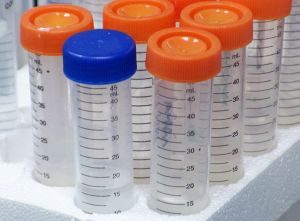AP: California Cannabis Safety Testing Rate Poor
Almost 1 in 5 California marijuana products have failed tests for purity and potency by the state’s Bureau of Cannabis Control since the agency began mandating checks at the beginning of July. The Associated Press reported that some cannabis farmers and distributors are blaming the failure rate not on product quality but rather on standards that are unrealistic and aren’t aimed to protect the public. Technical glitches haven’t helped.
Cannabis-infused cookies, tinctures and candies have been especially hit hard, with approximately one-third of its product removed from store shelves.
Other problems revealed (albeit on a smaller scale) by state-licensed testing firms are finding too-high levels of solvents, pesticides and bacteria, including salmonella and E. coli.
Within just eight weeks of testing, some 2,000 samples failed out of more than 11,000 Our L.A. marijuana product attorneys understand that in some of those instances, the product had to be destroyed, but a lot of the problems arose from issues with labeling, which are able to be fixed. Just for example, if a label on a container indicates a product has a potency level different than what’s on the label, the product can simply be relabeled and then move to market.
The state has argued that the stringent testing is accomplishing its intended purpose – identifying marijuana products like munchies, concentrates and buds that will be in some way not safe for smoking or eating.
These mandated state testing is new, and a spokesman for the bureau said some bumps along the way were anticipated and it would take time to go smoothly. Companies were given until the start of July to sell off all their stock that didn’t meet the state’s new testing standards.
Some marijuana firms have taken to applying pressure on lawmakers, urging formation of a process by which companies could appeal lab results. That’s because even when the laboratory concedes a mistake, they still have no way to officially reverse the rating, which would allow growers and manufacturers to preserve the product – and not lose the investment they’ve made. No laboratory is going to be 100 percent perfect. Our cannabis lawyers believe that if mistakes are made, it’s only fair there is an avenue for recourse.
The firm noted instances were mold was discovered on marijuana samples that passed state testing standards. They argue the state needs a bigger net to catch more things. The state Department of Health has said there are no verified reports of marijuana consumption that can be traced back to contaminants like mold or bacteria, though there were three anonymous complaints.
The company has seen examples where mold was on cannabis but the sample passed state tests.
Mislabeling failures accounted for approximately 65 percent of all product failures. Even distribution of THC in products in top priorities.
 Cannabis Law Group's Medical Marijuana Legal Blog
Cannabis Law Group's Medical Marijuana Legal Blog




